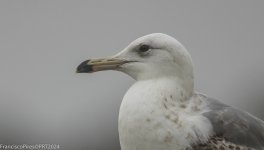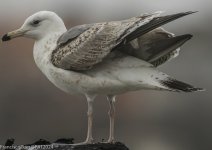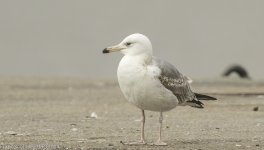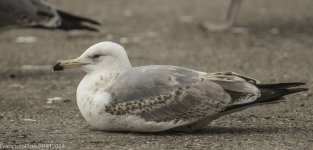Frubecula
Member

Location: Port of São Pedro da Afurada, Vila Nova de Gaia, Portugal
Date: 2024-02-13
Beak, head, eye, legs and plumage seem to agree with cachinnans 2nd winter, but the small mirror that, according to the literature, perhaps should already exist in P10, is not visible.
Your opinion please. Thank you.
Date: 2024-02-13
Beak, head, eye, legs and plumage seem to agree with cachinnans 2nd winter, but the small mirror that, according to the literature, perhaps should already exist in P10, is not visible.
Your opinion please. Thank you.









